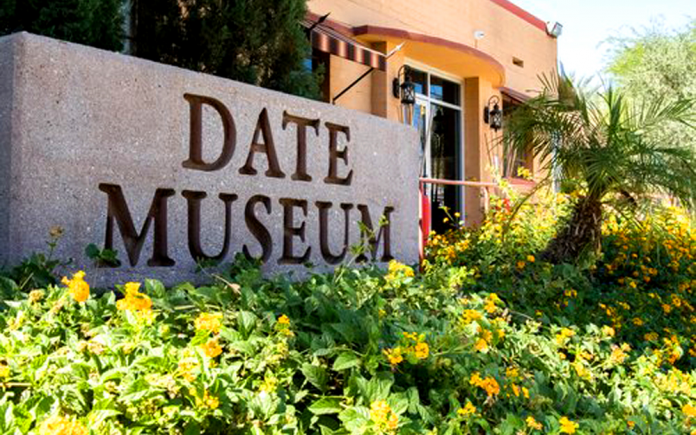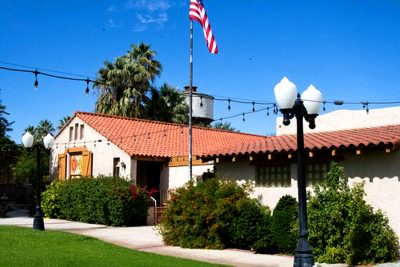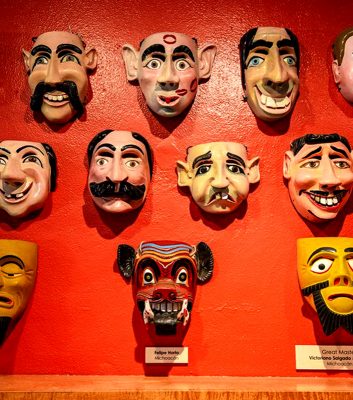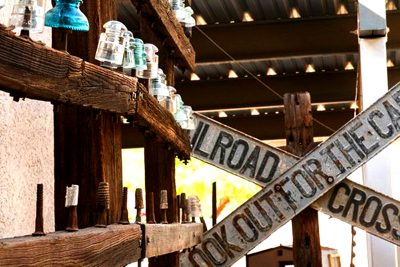
Article and Photos By Crystal Harrell
History can be found around every corner, and the mission of the Coachella Valley Historical Society, Inc. is to preserve, interpret, and share the artifacts that create a dialogue about the evolving history of the Coachella Valley.
 Located in Indio, the Coachella Valley History Museum is the best way to learn about the history of this beautiful desert. With a rich collection of exhibits, visitors can learn all about the people, places, and times that have made the Coachella Valley the epicenter of so much in Southern California history, resulting in a rich, entertaining, and educational museum experience for adults and kids alike.
Located in Indio, the Coachella Valley History Museum is the best way to learn about the history of this beautiful desert. With a rich collection of exhibits, visitors can learn all about the people, places, and times that have made the Coachella Valley the epicenter of so much in Southern California history, resulting in a rich, entertaining, and educational museum experience for adults and kids alike.
There are a variety of permanent, interactive exhibits that provide further insight into the cultural and historical significance of the Coachella Valley. Corazón de Mexico features an outstanding and eclectic and colorful collection of Mexican folk art, including textiles, pottery, costumes, and wooden toys. This exhibit captures the vibrant spirit and life of this amazing artwork. Visitors are invited to view an eclectic collection of Mexican folk art representing many Mexican artisans of textiles, pottery, costumes and wooden toys displayed in the museum’s very own 1926 Smiley-Tyler Adobe House.
 Another permanent exhibition, the Smiley-Tyler House, was once the private personal residence of Dr. Smiley and Dr. Tyler. This building now houses many of the Coachella Valley History Museum’s most popular attractions: The Desert Cahuilla People Room, Water & Agriculture Exhibit Area, Heritage Room—this year’s annual rotating exhibit, Railroad & Fire Department Room, The 1930s and 1940s Kitchen, and the Pioneer Hall. Guests have a chance to learn their amazing story and how the Smiley-Tyler families enriched the history of this one-of-a-kind campus property.
Another permanent exhibition, the Smiley-Tyler House, was once the private personal residence of Dr. Smiley and Dr. Tyler. This building now houses many of the Coachella Valley History Museum’s most popular attractions: The Desert Cahuilla People Room, Water & Agriculture Exhibit Area, Heritage Room—this year’s annual rotating exhibit, Railroad & Fire Department Room, The 1930s and 1940s Kitchen, and the Pioneer Hall. Guests have a chance to learn their amazing story and how the Smiley-Tyler families enriched the history of this one-of-a-kind campus property.
 The California Date Museum is another exhibition that lets visitors experience the culture of the Coachella Valley Date by covering the history of the world’s oldest cultivated crop: the date palm. From its origins in the Middle East to its introduction to Coachella Valley and up to the modern-day, visitors can learn about the horticulturalists and essential workers who helped the date palm take hold.
The California Date Museum is another exhibition that lets visitors experience the culture of the Coachella Valley Date by covering the history of the world’s oldest cultivated crop: the date palm. From its origins in the Middle East to its introduction to Coachella Valley and up to the modern-day, visitors can learn about the horticulturalists and essential workers who helped the date palm take hold.
For a real trip back in time, visit the 1909 Indio Schoolhouse, Indio’s third school, which was transferred to the museum grounds in 1999. The school was originally built with help from the Southern Pacific Railroad, something that is clear in the early train depot design. Student desks are set up as they were so long ago, complete with slate boards for writing lessons.
Pioneer Hall was renovated in 2012 with the help of the Indio Sunrise Rotary Club and the Woman’s Club of Indio. Pioneer Hall is Indio’s hub for local artists to come together, proudly hosting their rotating artwork and commemorating the talent of Indio’s most creative artists. It also serves as a venue for intimate gatherings both public and private.
The last permanent exhibition is the Outdoor Gallery, which pays homage to when available land and water brought people to the Coachella Valley to grow fruits, vegetables and hay over 100 years ago before there were any automobiles or air conditioners. In tribute to the pioneers, cultivators, railroad workers, and blacksmiths, this array of tools, structures and equipment are on display to give a sense of how the Coachella Valley was being transformed to pave the way for the 21st century.
The Coachella Valley Historical Society, Inc. also maintains an archive depository. History from the entire Coachella Valley is included from newspapers and magazines, to business licenses and photographs. The archives house over 100 years of history. Internship opportunities are available for college students and researchers are welcome to explore. Please contact the Museum with requests for historical information or opportunities to conduct research in the archives, as scheduling is done on an appointment basis.
The Coachella Valley History Museum’s “History Hunters” is a new group event that is open to the public and free to join. Meetings are the last Tuesday of every month from 10 a.m. to 12 p.m. and feature local history, artifacts, and speakers.
“We talk about different historical questions of the Coachella Valley, and people are invited to bring items of significance as well. Some of the attendees of History Hunters are over 90 years old and have helped us identify certain things from the archives. It’s like solving little mysteries and I’ve actually found more information on my own family as well,” stated archive volunteer Linda Beal, who has been volunteering at the Coachella Valley History Museum for 20 years.
For more information, visit the Museum’s website at www.cvhm.org.










































